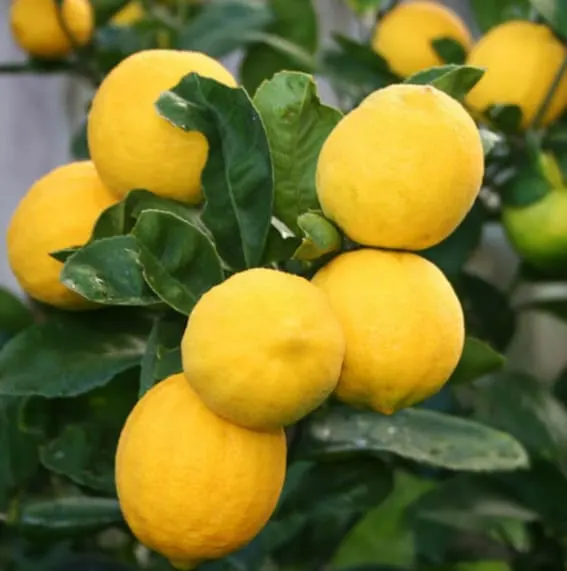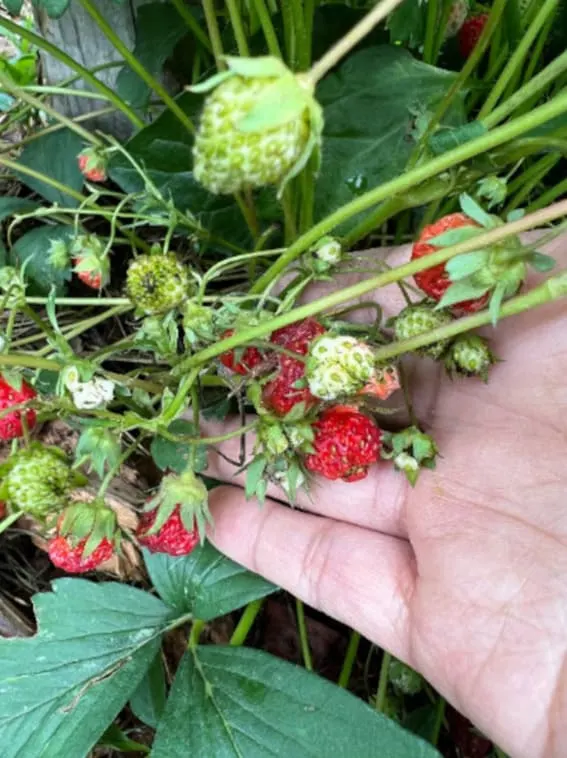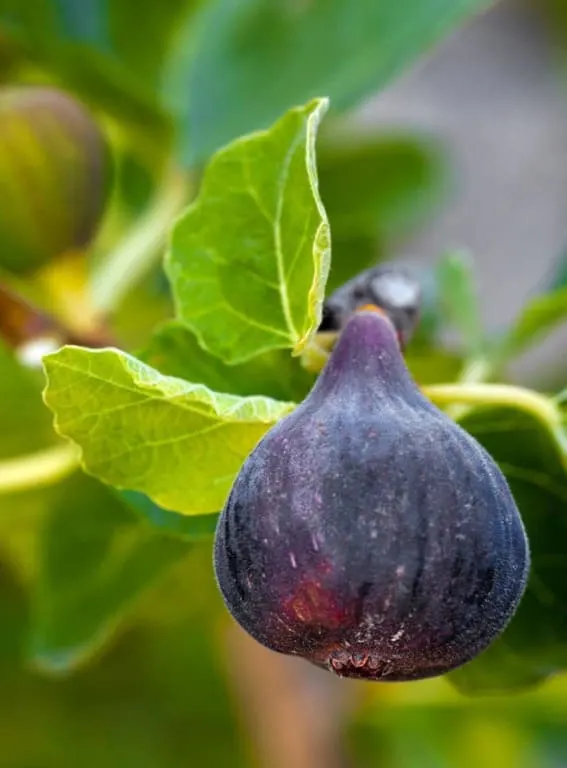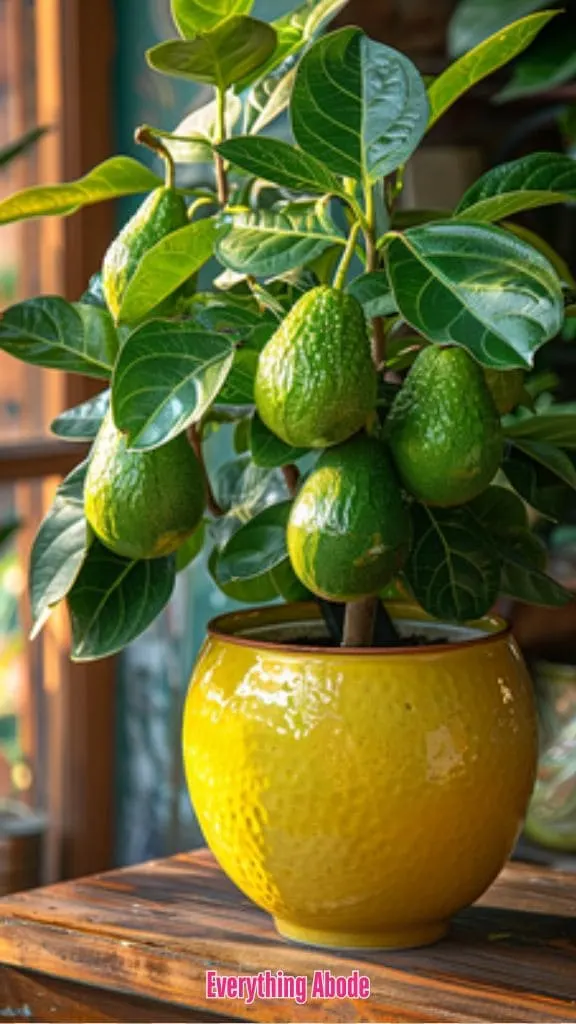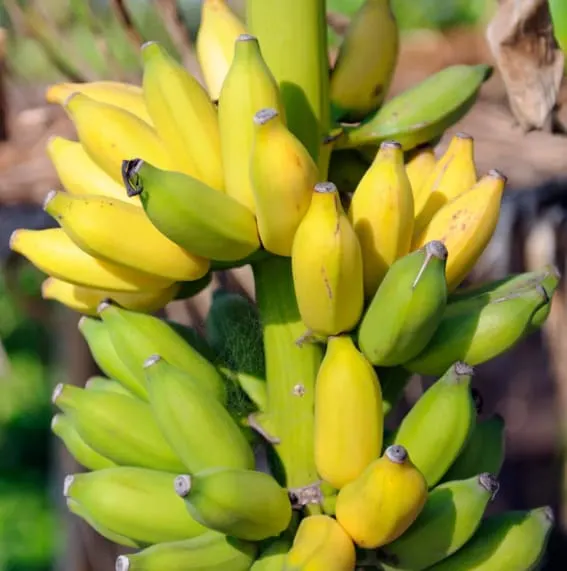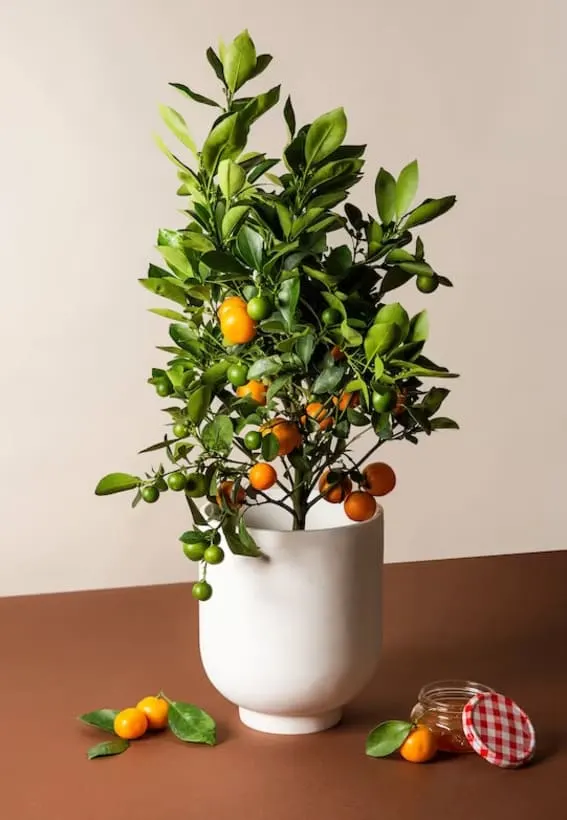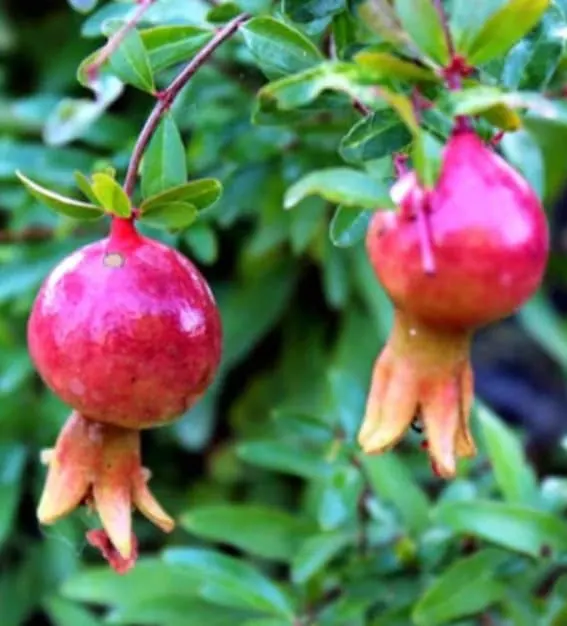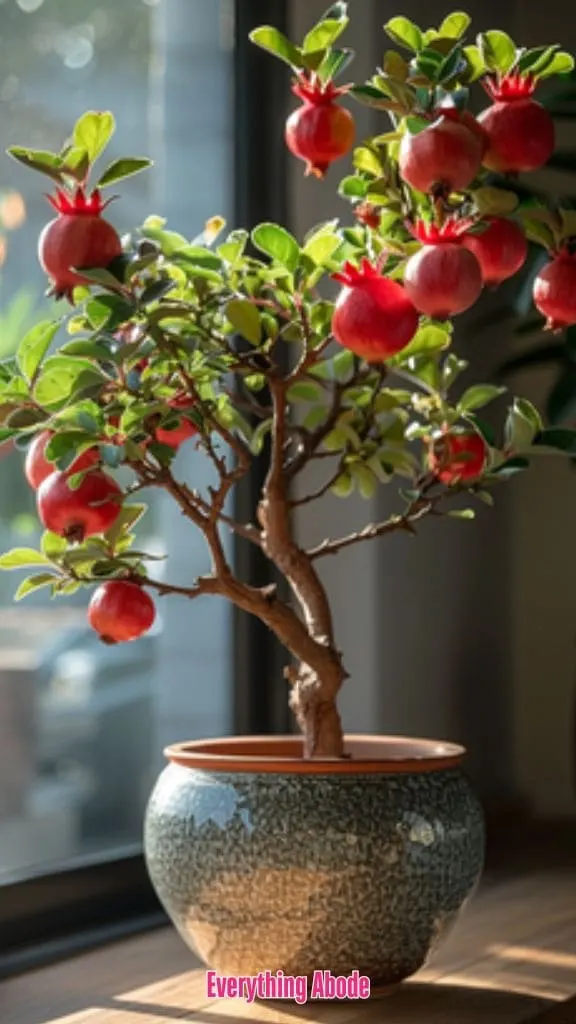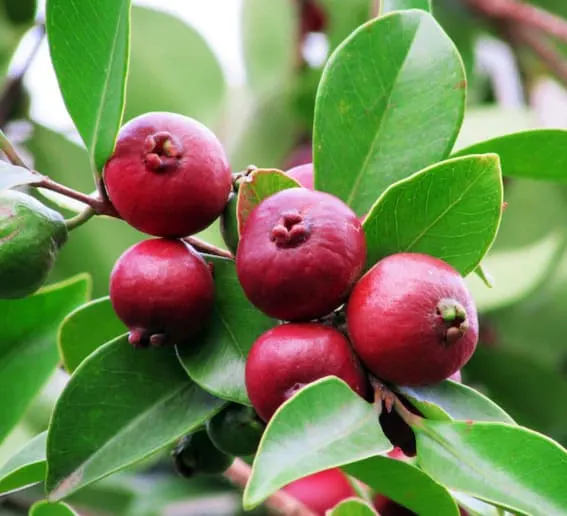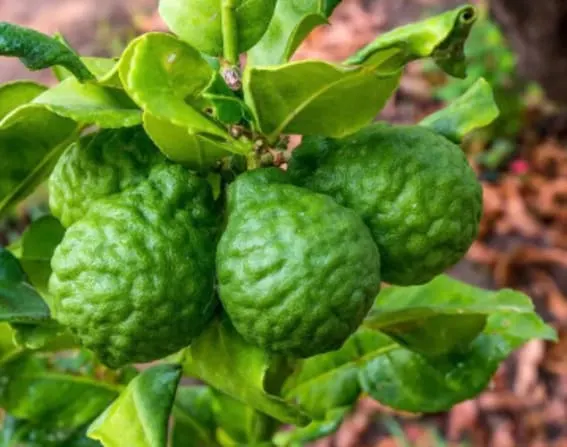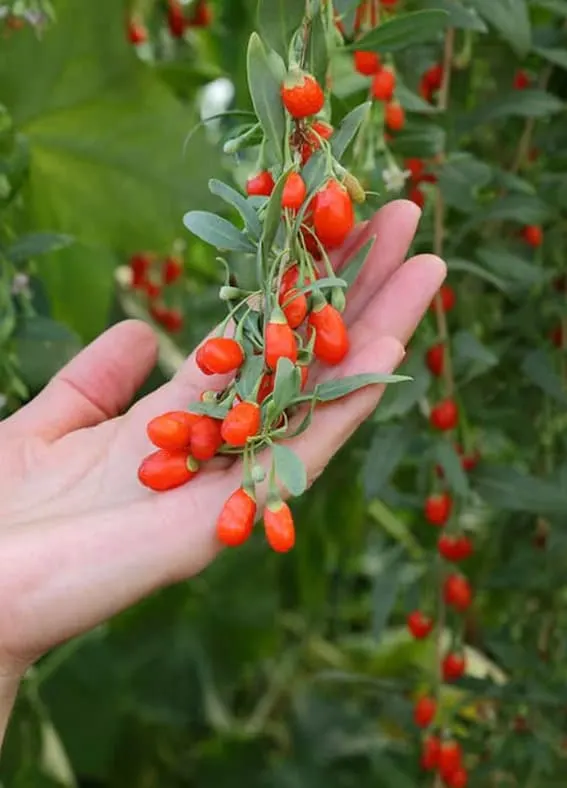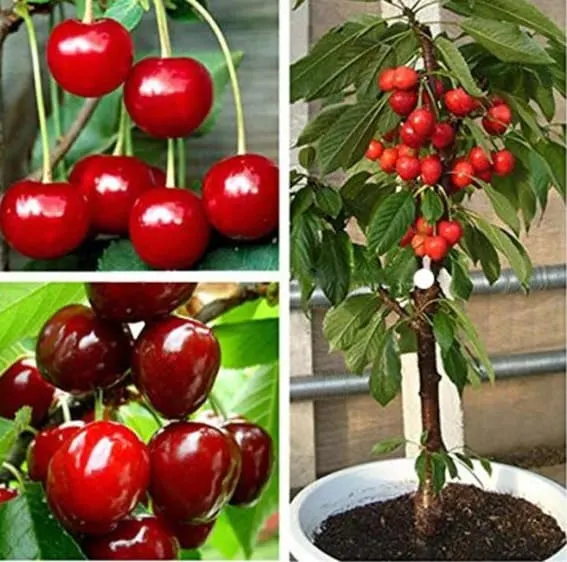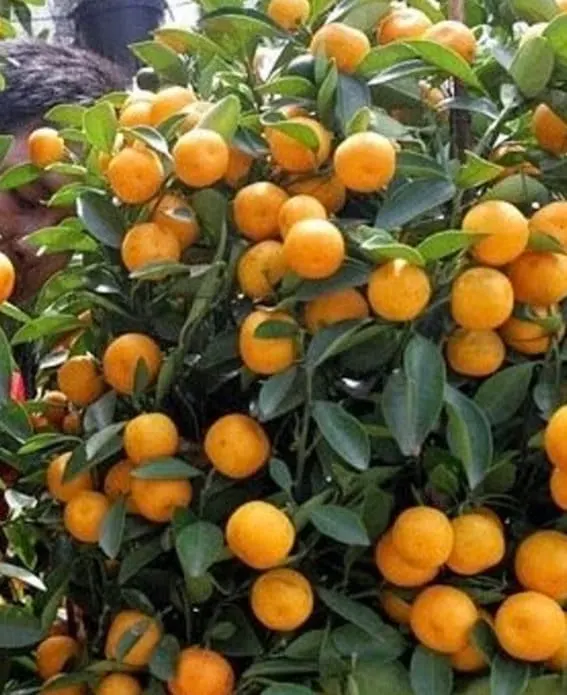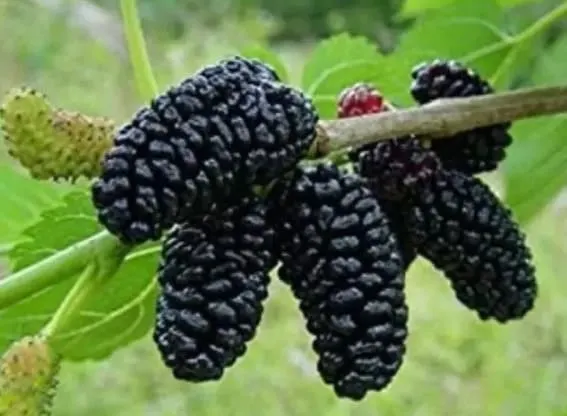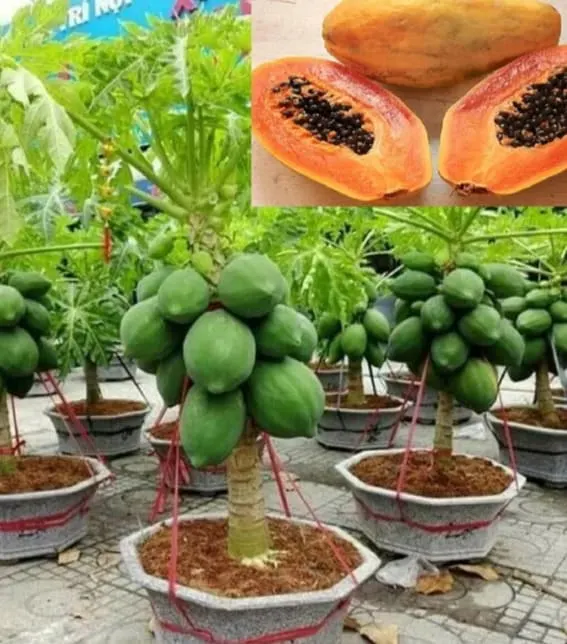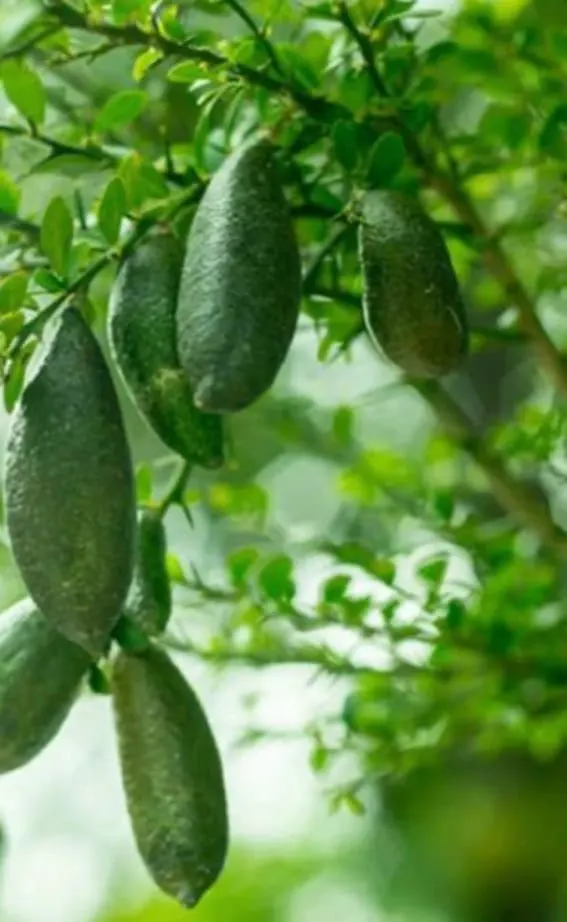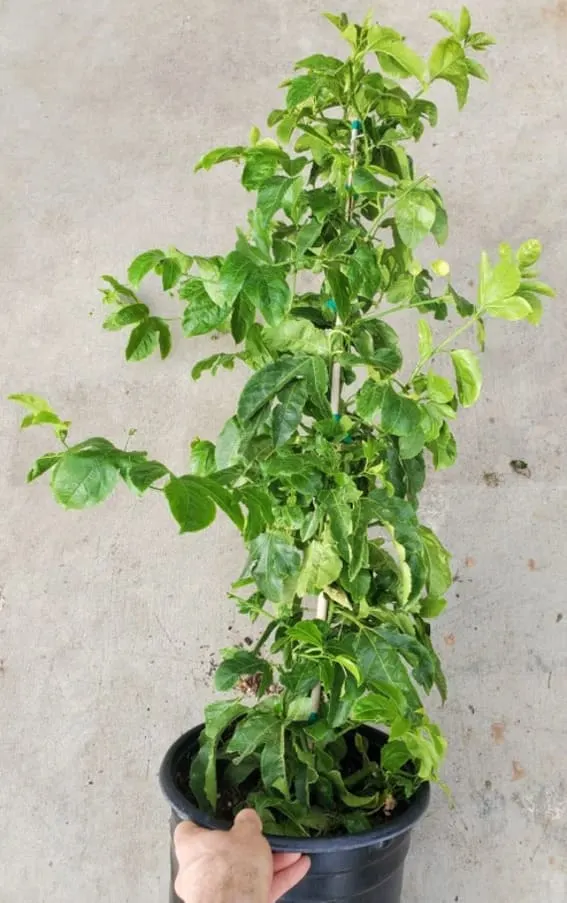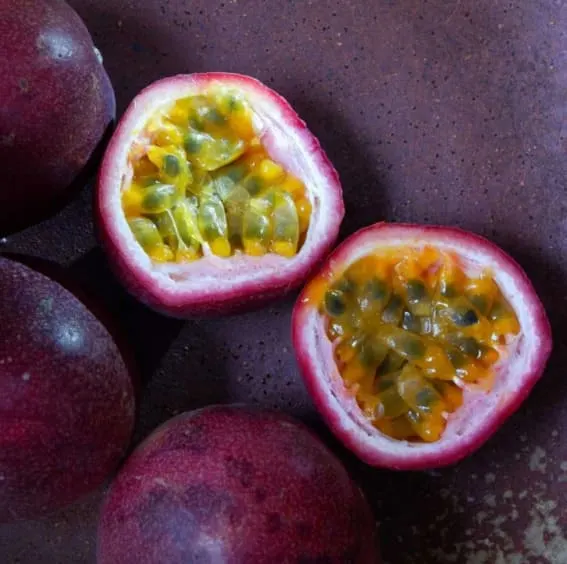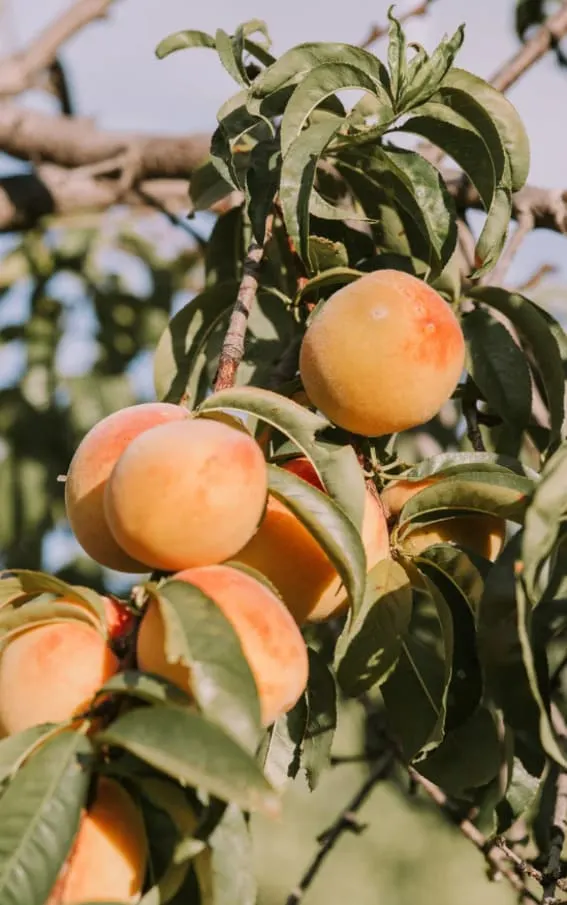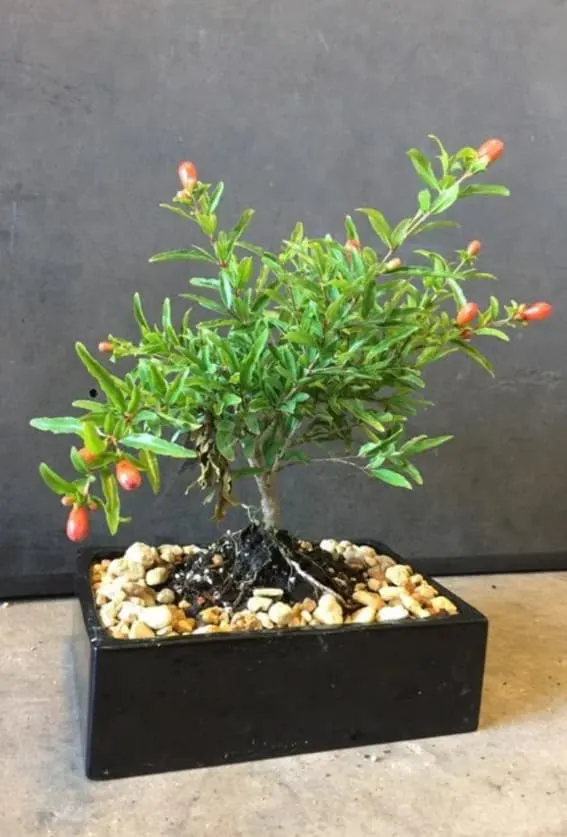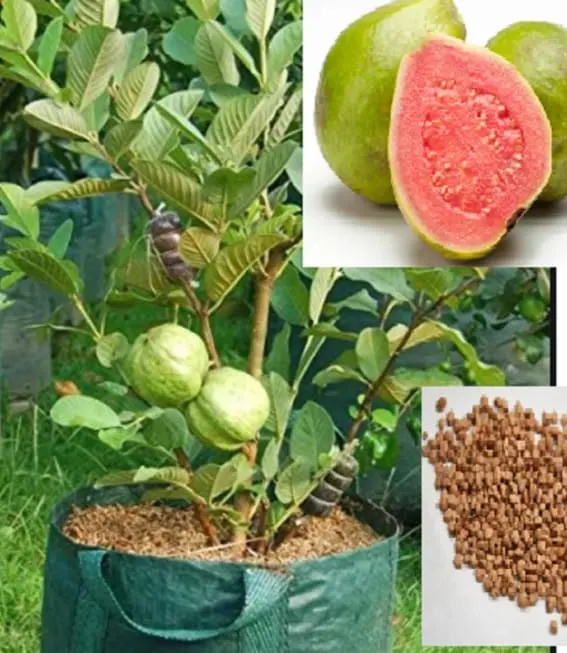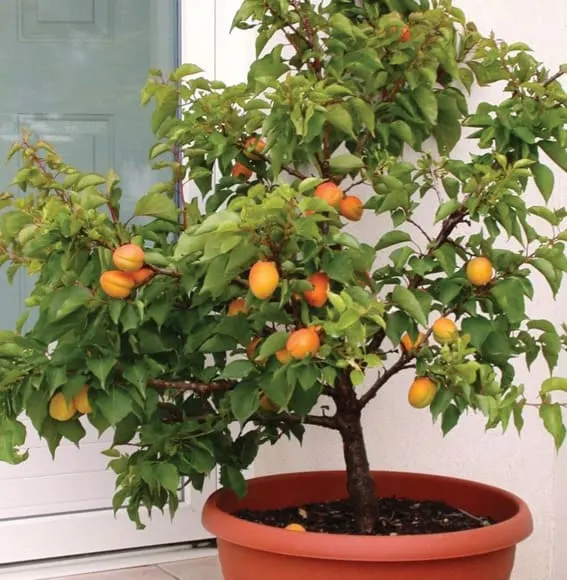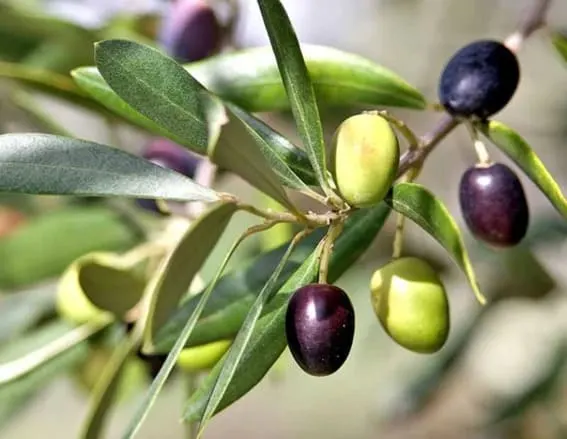Fruit-Bearing House Plants: If you didn’t already know, there are a few reasons why you should cultivate a fruit-bearing plant in your home.

What’s the need to plant a substantial backyard garden to collect seasonal fruits when you can grow them indoors?
Moreover, if you take care of your fruit plant(s) well and have an ideal growing spot inside, you may just be able to grow delicious fruit indoors—aka fruit grown inside your home!
If that entices you, peek at this list of the best indoor fruit-bearing house plants you can grow indoors.
This guide to fruit-producing plants includes all the most flourishing fruit plants ideal for growing indoors.
These plants will add extra appeal and beauty to your home’s interior because most fruit grows from pretty flowers!
Also, most of these plants/trees bear delicious treats throughout the year, no matter what time of year.
Yes, that means no seasons are required!
So look at the list of the best fruiting house plants for indoors.
RELATED: 14 Cute Miniature Dwarf Vegetables & Fruit Plants For Tiny Gardens
Did you know that growing fruit indoors has a source of benefits?
If you didn’t already know, there are a few reasons why you should cultivate a fruit-bearing plant in your home.
1. Year-Round Harvest: Enjoy the freshest fruits regardless of the season.
2. Space Efficiency: Ideal for those limited in outside space to grow fruits from plants.
3. Enhanced Decor: Fruiting plants add class and a tropical feel to your home. Plus, most of these plants provide extra color from the fruit as they grow.
Tips for Successful Indoor Fruit Gardening
Before you commit to the fruit plant of your choice, and if you are considering growing an indoor plant that bears fruit, take a peek at these top tips to ensure you have the right idea before investing in your chosen plant.
1. Light: Most fruiting plants require ample sunlight. Plant them close to windows that face south or use grow lighting.
2. Water: Maintain consistent levels of water. However, be aware of water logging.
3. Soil: Choose a drainage mixing mix specially made to fit the specific plant species.
4. Container: Make sure that the containers are adequately drained and appropriate in size for plants.
5. Temperature: Control the temperature within your house that is appropriate for the species of plant you wish to keep.
Here are the Top Fruits You Can Grow Indoors
Here are 21 different varieties of fruiting house plants that you can buy today!
All the plants are shoppable. Click the image to buy the plant you love most!
1. Meyer Lemon (Citrus x meyeri)
Meyer lemon trees blossom with stunning flowers and sweet fruit. Their lush green leaves and vibrant yellow lemons bring an exotic feel to home.
Tips for growing: Place the pot in a sunny location with 8 to 12 hours of sunlight. Water frequently to ensure that the soil stays damp, but don’t soak. Use a pot with adequate drainage. Ensure temperatures are between 65 and 75 degrees F.
Fun Fact: Meyer lemons are sweeter and less acidic than normal lemons, making them perfect for cooking and baking.
You can snag your lemon tree here!
2. Alpine Strawberries (Fragaria vesca)
Alpine strawberries are tiny dwarf strawberries ideal for indoor growing. They are known for their sweet, small, and delicious fruits.
Grow Tips: Your plants should be exposed to at least 6-8 hours of direct sunlight or utilize a grow lighting source. Water regularly to keep your soil moist but not soggy. Ideal temperatures range from 60 to 80 degrees.
Fun Fact: Contrary to traditional strawberry varieties, Alpine strawberries are fruitful all year round.
You can snag your Alpine Strawberries plant here!
3. Black Mission Fig (Ficus carica ‘Black Mission’)
Black Mission figs are exotic fruits that are easy to nurture as houseplants. Thanks to their large leaves, beautiful leaves, and sweet fruits, they can add a classy touch.
Growing Tips: The figs need plenty of sunshine, between 6 and 8 hours each day. They need watering as soon as the top layer of soil has dried. Be sure to choose the right pot with ample drainage. The temperature should be between 60 and 75 degrees.
Fun Fact: Black Mission figs have the most delightful, sweet taste and are perfect for fresh or dried consumption.
You can snag your Black Mission figs plant here!
4. Hass Avocado (Persea Americana ‘Hass’)
Hass Avocado trees are delightful and rewarding for an indoor plant. While they might take some time to bear fruits, their beautiful leaves are a great way to be gorgeous house plants.
Tips for growing: Place in indirect sunlight. Ensure that the soil is moist; ensure adequate drainage to stop root decay. Utilize a larger container to house the growing roots. Ensure that the temperature remains comfortable at 60 to 85 degrees, which is the ideal temperature.
Fun Fact: Avocado trees can improve indoor air quality by removing toxins in the air.
You can snag your Hass Avocado plant here!
5. Dwarf Cavendish Banana (Musa acuminata ‘Dwarf Cavendish’)
Small-sized bananas thrive in indoor environments and add the appearance of lush tropical gardens to the living area. If correctly cared for, they can yield sweet and small-sized bananas.
Growing Tips: The plants require light for at least 12 hours daily. Maintain the soil’s water content. Choose a big container with adequate drainage to accommodate the growth. Keep the temperature between 75 and 95 degrees F.
Fun Fact: Dwarf Cavendish banana can grow up to 6 feet tall, a fantastic feature to add to your decor.
You can snag your Dwarf Cavendish Banana plant here!
6. Calamondin Orange (Citrus microcarpa)
Calamondin orange trees are stunning and produce tiny, tart fruits. Their shiny leaves and fragrant flowers make them the perfect indoor garden.
Growing tips: Set the plant in a bright spot for 8 to 12 hours. Maintain the soil’s water content and make sure that the pots are well-drained. Keep temperatures between 55 and 85 degrees Fahrenheit.
Fun Fact: Due to their tart flavor, calamondin oranges are often used in cooking and making Marmalade.
You can snag your Calamondin Orange plant here!
7. Dwarf Pomegranate (Punica granatum ‘Nana’)
Dwarf pomegranate trees are covered in vivid red flowers, like tiny sweet-tart fruits. They are small and perfect for growing inside as a home fruit-bearing house plant.
Growing tips: Use plenty of sunlight, ensure the soil stays moist, and use containers that drain quickly. Keep temperatures between 60 and 75 ° F.
Fun Fact: Small pomegranates are beautiful and high in antioxidants, Vitamins, and minerals.
You can snag your Dwarf Pomegranate plant here!
8. Strawberry Guava (Psidium littorale)
The strawberry guava tree yields tiny, sweet, tart, and tangy fruits. Its gorgeous foliage makes it ideal for indoor gardening.
Grow Tips: Use bright lighting, ensure that the soil is damp and well-drained, use drainable pots, and keep temperatures between 65 and 85°F.
Fun Facts: Strawberry guavas are rich in vitamin C. They have a distinctive taste that combines the flavors of Guava and strawberries.
You can snag your Strawberry Guava plant here!
9. Kaffir Lime (Citrus hystrix)
Kaffir lime trees are highly prized because of their beautiful leaves as well as their tart fruits. The leaves are often used in Thai food preparations.
Growth tips: Plant in pots that drain efficiently and allow 8-12 hours of sun often. Keep temperatures between 60-85 ° F.
Fun Fact: The green round fruit is made up of Kaffir lime trees. Kaffir lime trees aren’t typically consumed fresh. However, they are employed for their juice as well as zest.
You can snag your Kaffir Lime plant here!
10. Goji Berry (Lycium barbarum)
Goji berries are famous for their bright red fruit, packed with antioxidants. Goji berries can be grown indoors, given the proper attention.
Growing Tips: Utilize bright light to ensure the soil is moist and that pots have drainage. Maintain temperatures between 60 and 85 degrees Fahrenheit.
Fun Fact: Goji berries have been called “superfruits” due to their high amount of nutrients and health benefits.
You can snag your Goji Berry plant here!
11. Compact Bing Cherry Plant
Small Bing cherries could be a good choice for growing indoors. They produce delicious, tart fruits, and the beautiful flowers of their trees provide an elegant touch to any space as a perfect fruit house plant.
Growing Tips: Ensure it gets lots of sunlight and moistens the soil. Use large containers. Keep temperatures between 60 and 70 degrees F.
Fun Fact: The cherry blossoms signify spring and the start of various new seasons. They are frequently employed in the making of jams and desserts.
You can snag your Compact Stella Cherry plant here!
12. Nagami Kumquat (Citrus japonica ‘Nagami’)
These little citrus fruits impart a distinct taste for indoor cultivation. They’re tart as well as sweet, and they’re quickly eaten whole.
Growing Strategies: Give this plant 8-12 hours of sunlight daily. Water it frequently and ensure that the pots drain properly. Keep temperatures between 55 and 85 degrees Fahrenheit.
Fun Fact: Unlike most citrus fruits, they have apricot-colored skin and tart, sour flesh, making their flavor unique and tasty.
You can snag your Nagami Kumquat plant here!
13. Black Mulberry (Morus nigra)
Mulberry plants are compact and efficient for planting indoors. They can be grown in a pot indoors and produce delicious, sweet fruits that are delicious to eat fresh or even preserve.
Growing Tips: Ensure adequate lighting, moisten the soil at all times, and use deep pots. This will give you the best yield. Keep temperatures between 65 and 75 F.
Fun Fact: Mulberries are an excellent source of vitamins, including vitamin C, iron, and antioxidants. This is why they are a fantastic food item to incorporate into your eating routine.
You can snag your Black Mulberry plant here!
14. Dwarf Papaya (Carica papaya ‘Dwarf’)
Dwarf papaya tree plants can be cultivated indoors and yield tasty, exotic fruits. They are tiny and will add extravagance to your home.
Growing Strategies: Ensure you have plenty of light, consistently use water, and ensure your pots have adequate drainage. Keep temperatures between 70 and 90 degrees F.
Fun Fact: Dwarf Papayas begin to produce fruit in 6-12 months. They provide a delicious taste of fresh tropical weather right in your backyard.
You can snag your Dwarf Papaya plant here!
15. Finger Lime (Citrus australasica)
Finger limes are unique, long, citrus fruits that have caviar-like pearls. They have a delicious, tangy taste. They’re sometimes called “caviar limes. ”
Growing Tips: Get 8-12 hours of sunshine frequently, and make sure your drainage pot is adequately drained. Maintain temperatures between 65 and 85 degrees Fahrenheit.
Fun Fact: The little soft, smooth pearls found in finger limes make them the perfect garnish for dishes and give a burst of flavor to drinks.
You can snag your Finger Lime plant here!
16. Passion Fruit (Passiflora edulis)
A passion fruit plant produces exquisite, aromatic fruit with sweet, tart flavors. Its gorgeous, delicate blooms will add a smile to your space if you plant this fruiting plant in a container in your home.
Growing tips: Create a trellis or support for the vines. Ensure the light source is bright and keeps the soil moist but not soggy. The best temperatures should be between 65 and 85 ° F.
Fun fact: Passionfruit is an excellent source of vitamins C and A. Its vibrant large flowers are a great dual-purpose plant that beautifies the environment and produces fruit.
You can snag your Passion Fruit plant here!
17. Dwarf Peach (Prunus persica ‘Bonanza’)
Dwarf peach trees aren’t big and can produce delicious, fresh peaches when they are inside. They’re great to bring a touch of sweetness to your sunroom or as a kitchen plant.
Growing Tips: It needs at least 6-8 hours of sunlight. Ensure that the soil is damp yet well-drained. Then, place it in a giant planter. Maintain temperatures between 65 and 75 degrees F.
The Fun Fact: This variety is specifically created to be dwarf, which makes it suitable for indoor gardening; however, it continues to produce full-sized peaches.
You can snag your Dwarf Peach plant here!
18. Dwarf Pomegranate (Punica granatum ‘Nana’)
Dwarf Pomegranate trees have gorgeous bright red blooms and yield tiny but sweet, tart fruits when ready. They are small and perfect for cultivation in indoor spaces, making them an ideal fruit plant for your home.
Tips for growing: Make sure you have adequate lighting. Keep the soil moist, and use containers that drain correctly. Keep temperatures between 60 and 75 degrees.
Fun Fact: The dwarf pomegranate is a thriving fruit producer and a beautiful flowering plant that can decorate your house plants thanks to its vivid blossoms and unique fruit.
You can snag your Dwarf Pomegranate plant here!
19. Guava (Psidium guajava)
Guava plants can be grown indoors and produce delicious, fragrant fruit for mixing in salads and drinks. Their lush green leaves will also give your home an exotic look.
Growth Tips: Get plenty of light and keep the soil moist. Use moss as a topper. Use a large pot with drainage holes. Maintain temperatures between 65 and 85 degrees F.
Fun Facts: Guavas are rich in dietary fiber and vitamin C, making them a nutrient-rich and delicious addition to your garden.
You can snag your Guava plant here!
20. Dwarf Apricot (Prunus armeniaca ‘Goldcot ‘)
Dwarf Apricot Trees are great for indoor growing and produce delicious, sweet Apricots when ready. Their gorgeous flowers also make them an ideal double-purpose for home decor.
Growing Tips: Ensure ample light and moist soil; it should also be well-drained. Place it in the pot with the highest capacity to yield more fruit. Keep temperatures between 65 and 75 ° F.
The Fun Fact: Goldcot is well-known for its delicious taste and compact dimension, which makes it an ideal alternative for homes with small spaces, as it is a great small house plant.
You can snag your Dwarf Apricot plant here!
21. Dwarf Olive (Olea europaea ‘Little Ollie’)
Dwarf olive trees can be grown indoors and produce tiny, delicious olives. They have a distinctive Mediterranean garden appearance.
Growing Tips: Ensure plenty of light and keep the soil damp but adequately drained soil during the first season. Use an extra large pot if you want a mature tree size indoors. Maintain temperatures between 60 and 75 degrees Fahrenheit.
Fun Fact: The “Little Ollie” cultivar is most often grown due to its gorgeous foliage and compact dimension. When conditions are favorable, it produces loads of small olives, which are extensively used as spreads or on cheese boards.
You can snag your Dwarf Olive plant here!
There you go!
As you can see, growing your fruit from the inside is an enjoyable way to enjoy freshly grown fruits all season.
With the appropriate environment and care, we hope you pick the plant or fruit you love most and enjoy its benefits!
UP NEXT: How To Grow An Orange Tree In A Container Pot
Author: Everything Abode
Welcome to Everything Abode, your daily inspiration for every activity at home!
Our goal is to inspire you to live an elegant and chic lifestyle from the comfort of your home.
We’ll help you express yourself through authentic style, aesthetic beauty, and stylish home decor.
12 Best Air Purifying Pet-Safe Houseplants You Need to Own
Abelia Perennial Plant Growing Guide: How to Grow and Care for Abelia
8 Lucky Indoor Plants You Need (According to Feng Shui)
26 Amazing Gifts for Plant Lovers That'll Be A Big Hit
27 Beautiful Indoor Houseplants You Have to See
How to Care for the Mesmerizing Black Bat Flower
Subscribe to Get the Tools That Make My Blog Successful!

When you join my newsletter, I'm going to send you insider advice and tools that I use to grow my blog! I only save the BEST for my email list so don't wait!

